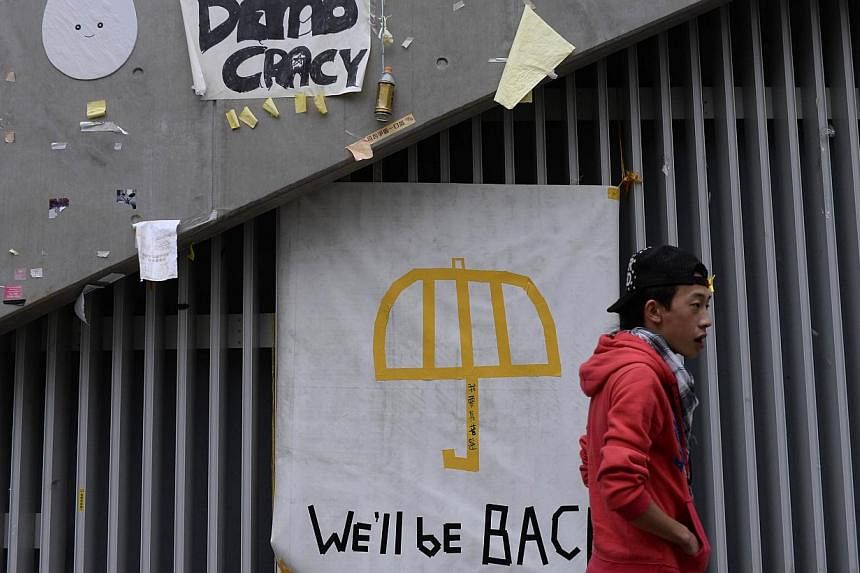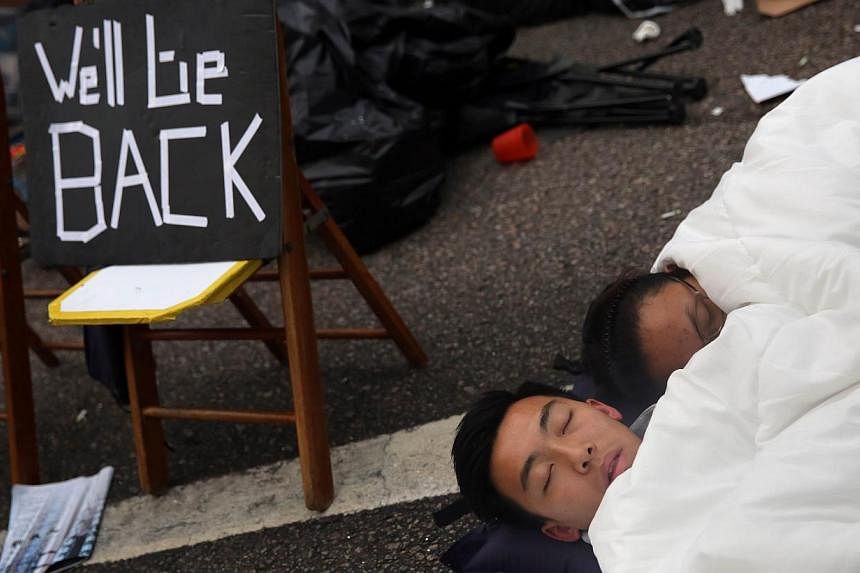ON WEDNESDAY night, PhD student Ricci Yue, 27, took a final stroll around the Admiralty protest site with friends, bidding farewell at favourite spots such as a polling booth he had helped set up to survey public opinions.
He packed up the blue tent that he had been sleeping in for the past 75 days.
And on Thursday morning, he threw away the toothbrush and other toiletries that he had been using.
It is time to go home.
"I feel sad and nostalgic," he tells The Straits Times. "But now, we need to plan for the next step of our movement."
Nearly 11 weeks after hundreds of thousands of protesters first flooded Harcourt Road in outrage over police actions, the historic civil disobedience campaign is coming to an end.
At 9am on Thursday, court bailiffs and police are on standby to begin clearing sections of the road in accordance to a court injunction. It won't stop there; the police have made it clear that they will demolish the entire site in a second phase of the clearance operation.
On Wednesday, a police source said that a whole range of options - including tear gas - are "possible" in trying to disperse protesters.
The protest site next to the government headquarters in Admiralty has been the main stage of the historic Occupy movement, which started on Sept 28 and eventually spread to Mong Kok and Causeway Bay as well.
It posed the worst political crisis for the government since the 1997 handover while also galvanising a new generation of politicised Hong Kongers.
The protesters are agitating for greater rights of the people to elect their chief executive, after Beijing on Aug 31 laid down strict rules that will rule out anyone it does not approve of from running for election.
On Thursday, police will cordon off swathes of the business district in Admiralty and parts of the financial hub in the adjacent Central.
Anyone found within the area will either be "dispersed" or be arrested if they refuse to leave after an ultimatum is issued, said a senior police source briefing the media on Wednesday night.
This is even as the Hong Kong Federation of Students (HKFS) and Scholarism called for people who had previously joined the protest to return and stay together until the police clear the site.
Student leader Alex Chow said that staying put means that they refuse to give in to the government and that they will consider "non-violent ways" of confronting the police.
When asked if tear gas will be used to disperse protesters refusing to leave, the police source made it clear that "all options are possible".
"It depends on the behaviour of the protesters. We are prepared for trouble, like what happened last Sunday," he said, in reference to protesters' attempt to surround the government complex and occupy a new road, leading to violent clashes with the police.
He said that the decision will be based on what is "absolutely necessary".
Officers will be on standby to ensure that protesters will not try to reoccupy the roads.
They will also take action to arrest those who are engaging in "unlawful" behaviour outside the cordoned off area.
This is to pre-empt what had happened in Mong Kok two weeks ago when the protest site was cleared. Protesters displaced from the cleared road then congregated at another street instead.
On whether the final protest site in Causeway Bay will be demolished on Thursday as well, the police source said that it is possible but will depend on progress made in Admiralty.
Since the Occupy movement began, a total of 655 people have been arrested. Some have been charged, some are on bail while others are still being investigated.
A total of 129 police officers have been injured.





